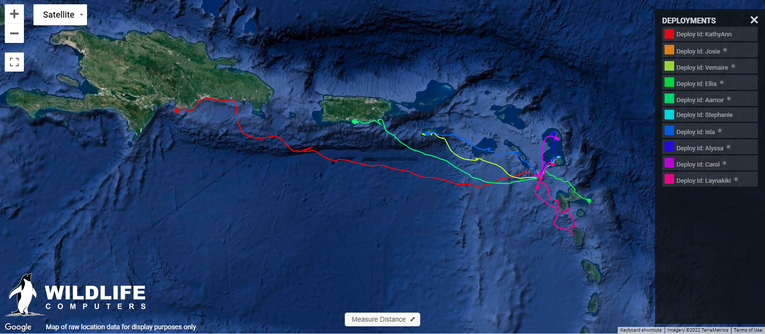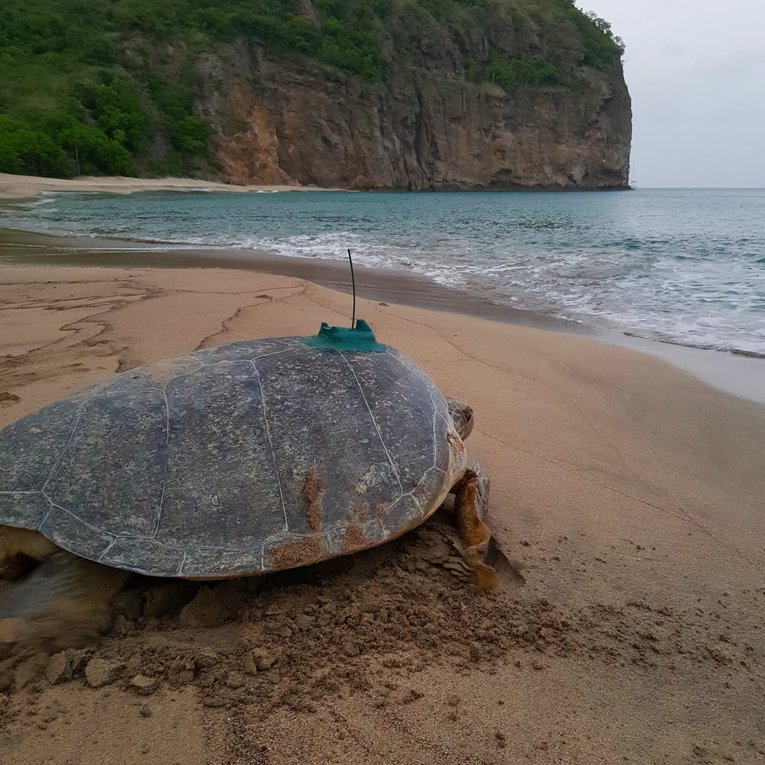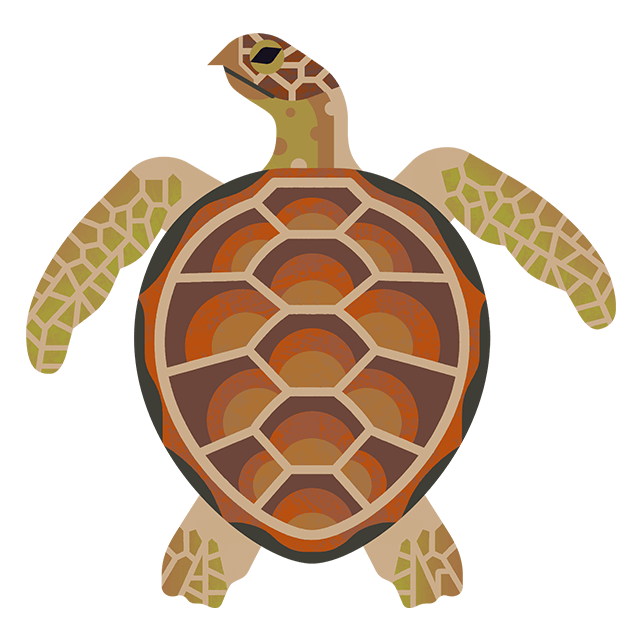
Protecting turtles in Montserrat
The island of Montserrat is an important nesting site for marine turtles in the Eastern Caribbean. Along with our local partners, we’re helping to recover and manage these populations.
Montserrat is known as the Emerald Isle due to its lush forests and historical links with Ireland. This Caribbean UK Overseas Territory might look idyllic, but violent volcanic eruptions between 1995 and 1997 destroyed the capital Plymouth. About two-thirds of the island became uninhabitable and thousands of people were displaced, with many settling in the UK.
Since then, Montserrat has been focused on recovery and rebuilding. Turtle conservation may be a small issue compared with other challenges, but ecotourism has an important part to play in many peoples’ vision for the future.
Turtles in Montserrat
Montserrat hosts populations of endangered green and critically endangered hawksbill turtles. The tropical waters, reefs and seagrass beds are ideal foraging grounds for juveniles. Nesting adults turtles migrate hundreds, or even thousands, of miles to lay their eggs in the sandy beaches where they were born.
The people of Montserrat have an enduring relationship with marine turtles. For centuries, turtle eggs and meat were an important source of protein, while the shell of the hawksbill turtle was made into jewellery and sold to tourists.
Threats to marine turtles
Decades of over-harvesting and exploitation have decimated marine turtle populations around the world. Other threats include:
- Incidental capture – turtles are often accidentally caught in fishing equipment such as long-line hooks or gill nets
- Habitat loss – industrial development and tourism can reduce the quality of feeding and and nesting grounds
- Climate change – turbulent weather, rising sea levels and increased temperatures are impacting turtle and their habitats
- Predation – while turtles have natural predators such as crabs, birds and sharks, introduced species such as feral pigs and dogs can take a great toll on turtle eggs and hatchings
- Pollution – turtles confuse plastic bags as their food source jellyfish, with many dying through ingesting this and other marine litter.
A Marine Turtle Action Plan for Montserrat
Little is known about the size of the numbers of turtles nesting on Montserrat, so more research is needed to ensure their protection.
Our team has already tagged 10 nesting females (nine green turtles and one hawksbill turtle) – two of which have already started their migration.
You can follow their journey on our interactive map.

Using science and community for conservation
The relationship between Montserratians and marine turtles is poorly understood outside of the island. We'll be using our tried-and-tested Community Voice Method to record the thoughts, opinion, values and knowledge of local people to factor into the plan.
Engaging local communities is vital for the future recovery and management of marine turtle populations.
Read our blog
Keep an eye on our news channels for the latest updates on the project www.mcsuk.org/news.










